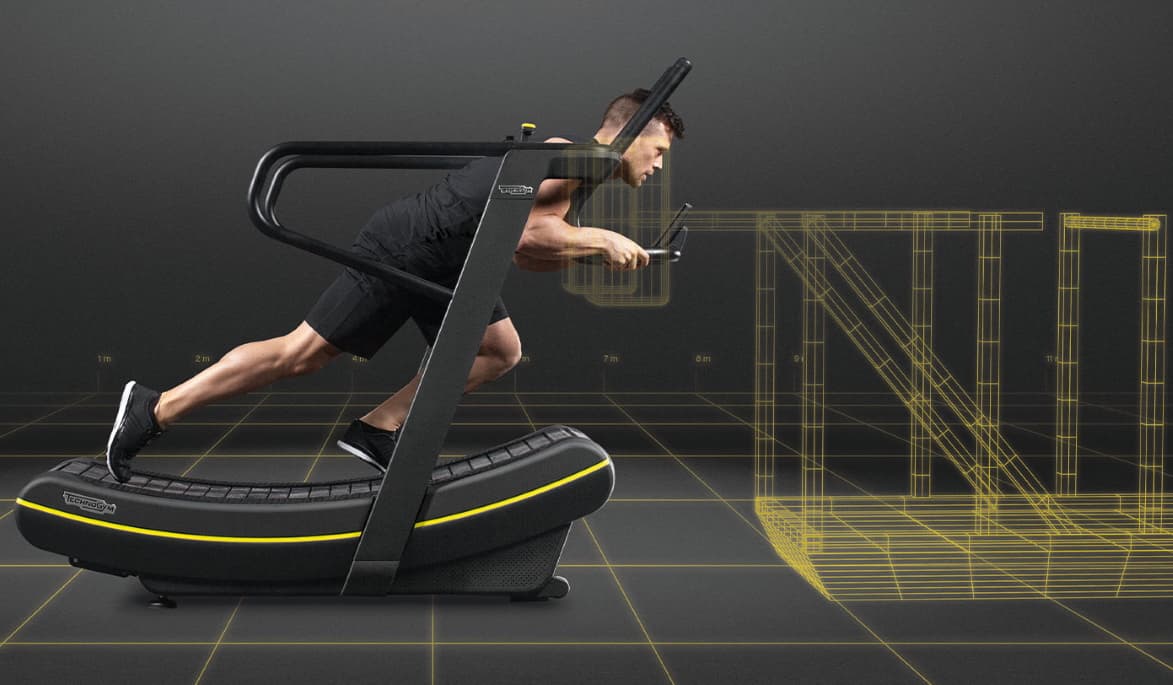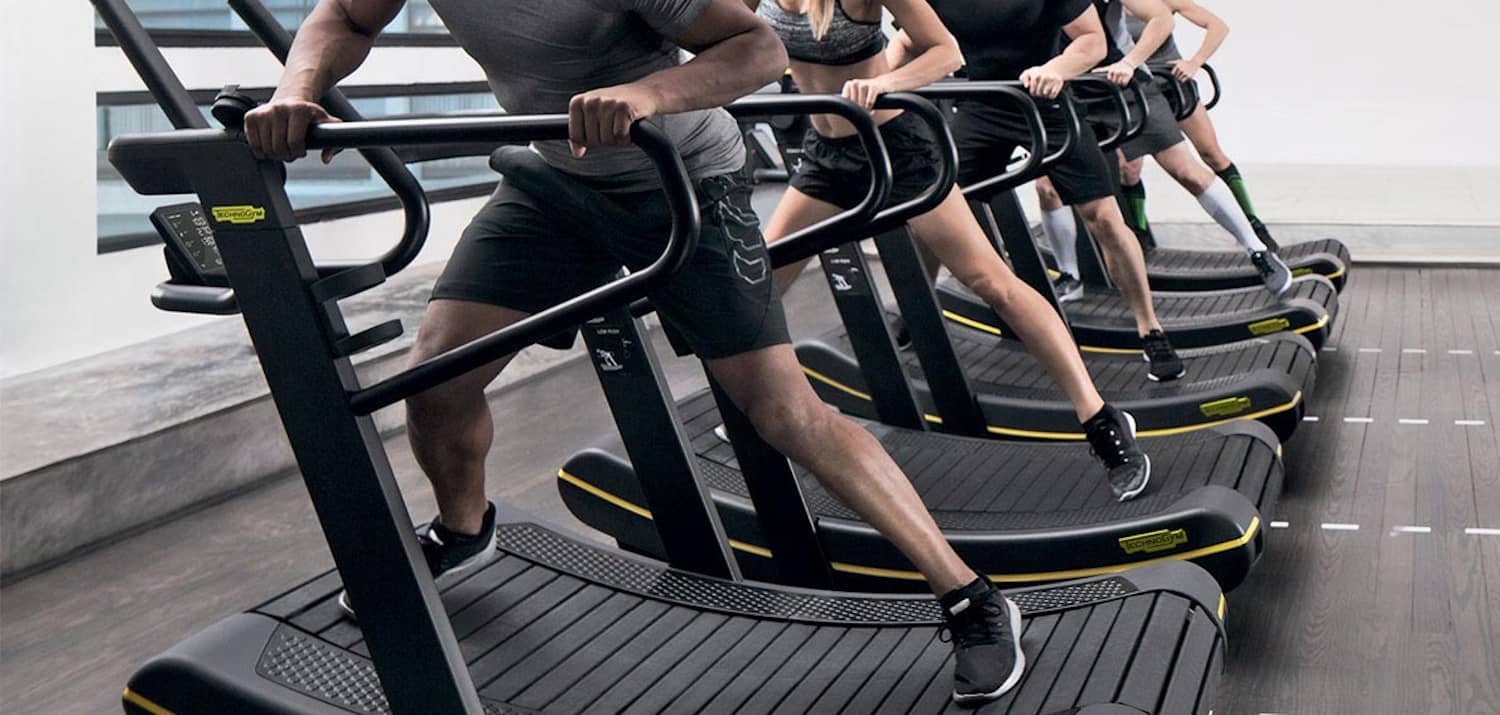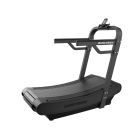Do Curved Treadmills Make That Much Difference?

The curved treadmill is a self-powered running machine that requires you to be the "power unit". The further up the tread you run, the faster you go! A scientific study measured the difference in runners effort for traditional motorised treadmills alongside a self-powered treadmill.
There is increased availability in the market, and a curved treadmill is no longer the preserve of those with £5k+ budgets. Established self-powered curve treadmills include the NOHrD Sprintbok, Woodway Curve Trainer and the Hammer Strength HD Curve treadmill. Designed to help power your run using only your energy! Your bodyweight and friction is what powers the belt to move and the speed you go depends on how far up the front of the curve you place your foot. With some treadmills you can also set the resistance of the belt using a knob placed on the front of the machine.
The first time you use a self-powered treadmill, users usually experience shortened breath and a faster heart rate than when using a normal treadmill.

Why Go Curve?
There are some great specific training options with a curved tread :
- Improve Aerobic Fitness
- Anaerobic Power (Speed Training)
- Build Anaerobic Capacity (Including: Interval Training, Fartlek Training, Timed Intervals, etc.)
- Max speed/Speed Training (Overspeed training, Sprint Drills (Acceleration technique, Bounding))
- Youth and/or Rehabilitative Locomotor Patterning
- Decreased Ground Reaction Force Training (including Quick Leg Cycle, Powerful Strides)
Harder Than Motorised?
Seeing as you are the power, however smooth and easy the curved treadmills are to run on, you are most definitely having to work harder. For example the Woodway Treadmills offer up to 3% curve meaning that in order to get any movement, you've got to move forward in to the curve to make the belt run.
Increasingly there are a range of curves available - with models like the Half Human Curved Treadmill having a shallow curve when compared to say the Woodway Curve models. This has the effect of changing the application of power that you can apply to power the running deck. In essence you need to run fiurther up the curve to generate the same speed.
The answer is a resounding yes - backed up by the Journal of Science and Medicine recently published study (see here for white paper).

What Methodology?
In order to properly assess whether a self-powered treadmill means more effort than a traditional treadmill, the University of Essex School of Sport Rehabilitation and Exercise Science recruited 13 male runners for this study. All 13 runners had personal bests for the 5k of faster than 20 minutes. Runners were required to do four treadmill runs in total over 2 weeks.
Defining the baseline was the first run and the runners were asked to run to exhaustion - this allowed the University to measure and record runner’s maximum heart rate, oxygen uptake and velocity. This was on a motorised treadmill with a gradient of 1%.
The second run was using the self powered treadmill to get used to it. The final two runs would be 4 minutes of running at 5 different speeds and between each interval, 3 minutes of passive recovery. The 5 different speeds were set at 40, 50, 60, 70 and 80 percent of the runners personal maximum speed.
The third and final run intervals which had been practised during the second run (on the motorised treadmill and a curved one).
Researchers measured each runners’ cadence, respiratory exchange ratio, heart rate and oxygen uptake during the last minute of each interval. They also as well as asking the runners to rate their perceived effort.
The Result
As per previous claims, Essex University researchers found that the runners ended up working almost 30% more on the self-powered treadmill.
To be more precise, runners worked an average of 27% harder on the non-motorised treadmill. Physiologically, their symptoms matched as they had 2.5 percent higher running cadence, 16 percent higher heart rates, consumed an average of 32 percent more oxygen and 38 percent worse running economy in comparison to when they ran at equivalent speeds on the motorized treadmill.
The study’s author, Patrick Schoenmakers, was keen to point out that curved treadmills also have a number of marked advantages.
"Every step you take effects what the curved treadmill does". This means that much like outdoors, runners can self-regulate each footfall. "Motorised treadmills make you make a conscious decision to speed up or slow down". Also, if you live in a flat area, using the self powered curved treadmill can be better for simulating hill training. Why? Because self-powered treadmills provide effective workouts for posterior chain muscles: hamstrings, glutes and calves.
If you are a runner that doesn't want to have a "paced run" then curved treadmills will be better for you to train on.
Along with his co-author, Kate Reed, Schoenmakers is working on a study to show that curved treadmills represent the same as an 8 percent gradient on a standard motorized treadmill.
In Summary
So you're working posterior chain muscles and your having to 'think' each step when you place your foot. Schoenmakers says choose the method of running you prefer as all methods are possible and can mimic outdoor running, curved and motorised treadmill running. Once runners get used to curved treadmills, they should keep in mind at least 20 percent difference in pace.
Schoenmaker wrote in an email that, "runners should be advised to lower their speeds." He explained that for example, "if they usually run 4:00 minute per kilometre reps in training, a speed of 12 kilometres per hour will mimic that." This conversion factor may also be used for both tempo runs as well as long distance runs.
So if you want to burn more calories and maximise effort for your training, then the self powered curved treadmill is defintely the way forward.








